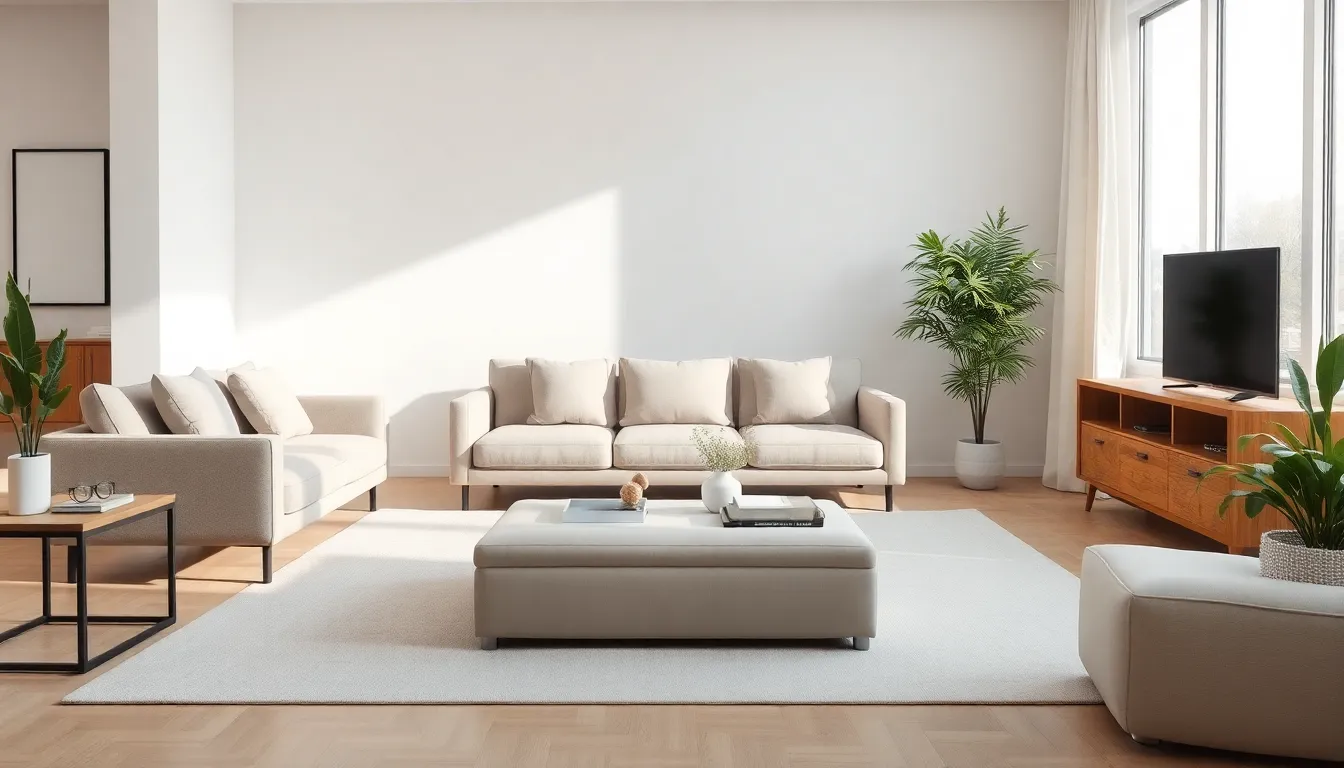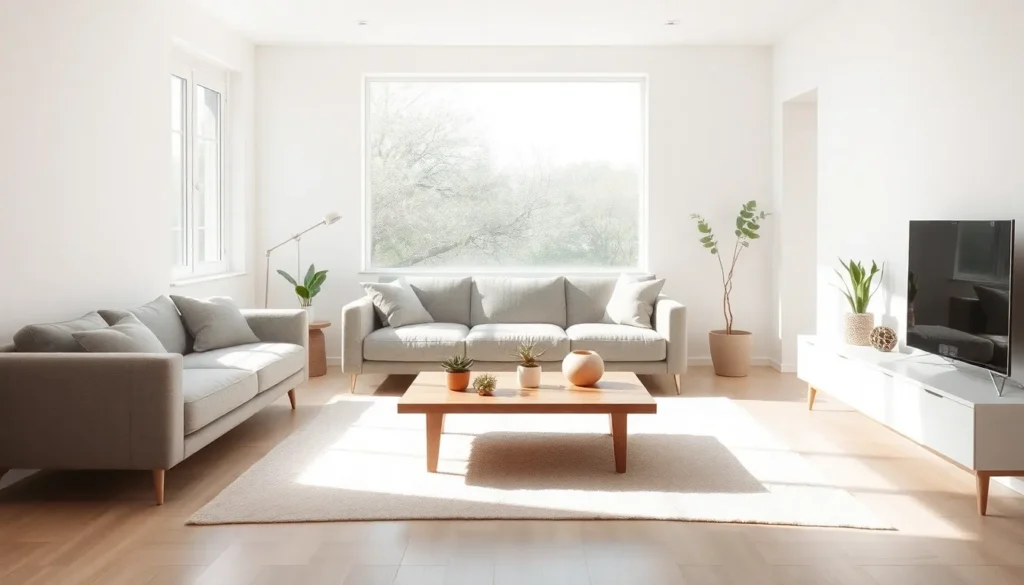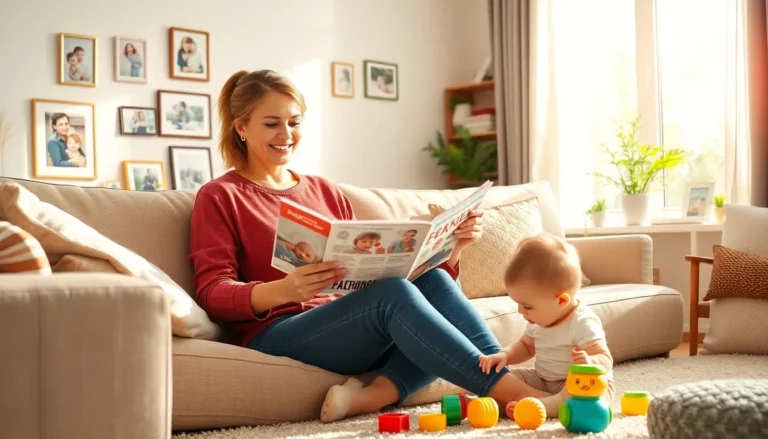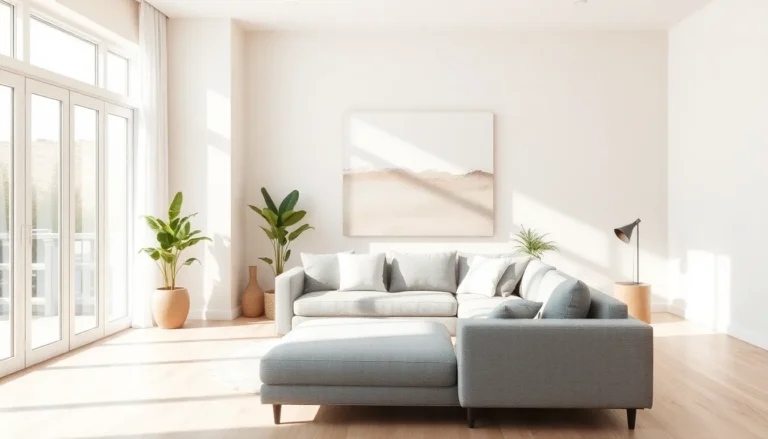Table of Contents
ToggleIn a world full of clutter and chaos, minimalist decor offers a refreshing escape. Picture a living room that feels like a serene oasis rather than a chaotic jungle of mismatched furniture and trinkets. With just a few carefully chosen pieces, one can transform their space into a stylish retreat that screams sophistication while whispering simplicity.
Understanding Minimalist Decor
Minimalist decor focuses on simplicity and functionality in living spaces. By reducing visual clutter, it enhances tranquility and promotes a calming atmosphere.
Key Principles of Minimalism
Simplicity is the core of minimalist design, emphasizing a few essential pieces. Functionality follows, where every item serves a purpose without unnecessary adornment. Neutral color palettes create a cohesive look, allowing for a soothing environment. Open spaces contribute to an airy feel, making rooms appear larger. Thoughtful curation of decor elements maintains balance and harmony in the room.
Benefits of a Minimalist Approach
Less clutter leads to less stress, resulting in a more peaceful living environment. Enhanced focus occurs as distractions diminish, promoting productivity and clear thinking. Easier maintenance comes with fewer items, simplifying cleaning routines. A stylish aesthetic appears, showcasing elegance through simplicity. Financial savings can arise as fewer purchases are made, leading to a more mindful spending habit.
Essential Elements of a Minimalist Decor Living Room

Achieving a minimalist decor living room involves careful attention to key elements that define simplicity and functionality. Focus on essential pieces and maintain a cohesive aesthetic to enhance the home’s serenity.
Color Palette
Neutral colors dominate the minimalist color palette. Shades like whites, greys, and beiges create a calm backdrop. Incorporating soft accents, such as muted pastels, adds warmth without overpowering the space. A consistent color scheme promotes visual unity, making the room feel expansive. Select paint tones that reflect natural light, as this strategy amplifies the airy atmosphere within the living area.
Furniture Selection
Prioritize functional furniture pieces that blend style and utility. Opt for low-profile sofas and sleek coffee tables that maintain open sight lines. Choose versatile items, like storage ottomans, which serve multiple purposes while minimizing clutter. Each piece should possess a clean design, avoiding ornate details that disrupt visual harmony. Limit the quantity of furniture to essential items, ensuring ample space for movement and relaxation.
Decorating Tips for a Minimalist Living Room
Selecting the right elements for a minimalist living room enhances the serene environment while keeping it functional.
Choosing Functional Pieces
Furniture choices stand at the core of minimalist decor. Prioritize items that offer both style and utility. Low-profile sofas provide comfort without overwhelming a space, creating a sense of openness. Storage ottomans serve dual purposes, acting as seating and hidden storage. Opt for coffee tables with clean lines that don’t distract from the overall aesthetic. Look for chairs that embody simplicity and incorporate natural materials to maintain a cohesive look. Every piece should contribute to the room’s functionality, ensuring the decor feels purposeful.
Maximizing Space
Space maximization plays a vital role in minimalist design. Embrace open floor plans that foster an airy ambiance. Limit the number of furniture pieces to promote easy movement and relaxation. Utilize vertical space effectively by incorporating wall-mounted shelves or floating units, drawing the eyes upward. Arrange furniture in a way that encourages conversation, allowing easy access to seating areas. Incorporating mirrors can enhance light and create a perception of additional space. Decluttering surfaces ensures an organized appearance, further enhancing the minimalist approach.
Accessorizing a Minimalist Living Room
Accessorizing a minimalist living room enhances its serene atmosphere while maintaining simplicity. Thoughtfully chosen elements can elevate the space without overwhelming it.
Incorporating Plants
Integrating plants adds a touch of nature to the design. Select low-maintenance varieties, like succulents or snake plants, to ensure ease of care. Positioning greenery near windows introduces natural light and enhances the airy feel. Choose planters with simple designs that complement the color palette. This approach emphasizes clean lines while providing life and color to the room.
Art and Decor in Moderation
Using art and decor pieces sparingly preserves the minimalist aesthetic. Opt for a few statement pieces instead of a gallery wall. Select artwork that reflects personal style without cluttering the visual space. Large-scale art can create a focal point without overwhelming smaller elements. Avoid excessive decor items to maintain an organized appearance, ensuring each piece serves a purpose in the overall design.
Maintaining a Minimalist Living Room
A minimalist living room thrives on simplicity and intentionality. Regular maintenance keeps the space serene and functional.
Regular Decluttering
Regular decluttering ensures an organized and peaceful environment. Removing non-essential items maintains focus on key decor elements. Establish a routine for decluttering surfaces and hidden spaces. Set aside time weekly to assess items that might disrupt the minimalist aesthetic. Remove unnecessary decorations, outdated furniture, or duplicates. This process fosters a sense of space and clarity in the room. Encourage mindful living by incorporating a one-in-one-out rule for new purchases. Designate specific areas for personal items, creating a tidy and welcoming atmosphere.
Mindful Purchasing
Mindful purchasing supports the principles of minimalist decor. Focus on acquiring multipurpose furniture that combines style and function. Consider the long-term value and versatility of each item before purchasing. Evaluate color, texture, and size to ensure cohesion with existing decor. Limit new additions to those that enhance or complement the overall aesthetic. High-quality pieces may provide greater satisfaction and longevity. By reducing impulse buying, harmony in the space increases. This approach aligns perfectly with the minimalist philosophy of intentional living.
Embracing minimalist decor in the living room creates a tranquil and sophisticated environment. By focusing on essential pieces and maintaining an open space, individuals can cultivate a serene retreat that enhances both style and functionality. The use of neutral color palettes and thoughtfully selected decor fosters a cohesive aesthetic that promotes relaxation.
Regular decluttering and mindful purchasing further support the minimalist ethos, ensuring that every item serves a purpose. This intentional approach not only reduces stress but also encourages a more organized lifestyle. Ultimately, a minimalist living room is more than just a design choice; it’s a commitment to simplicity and harmony in daily life.







